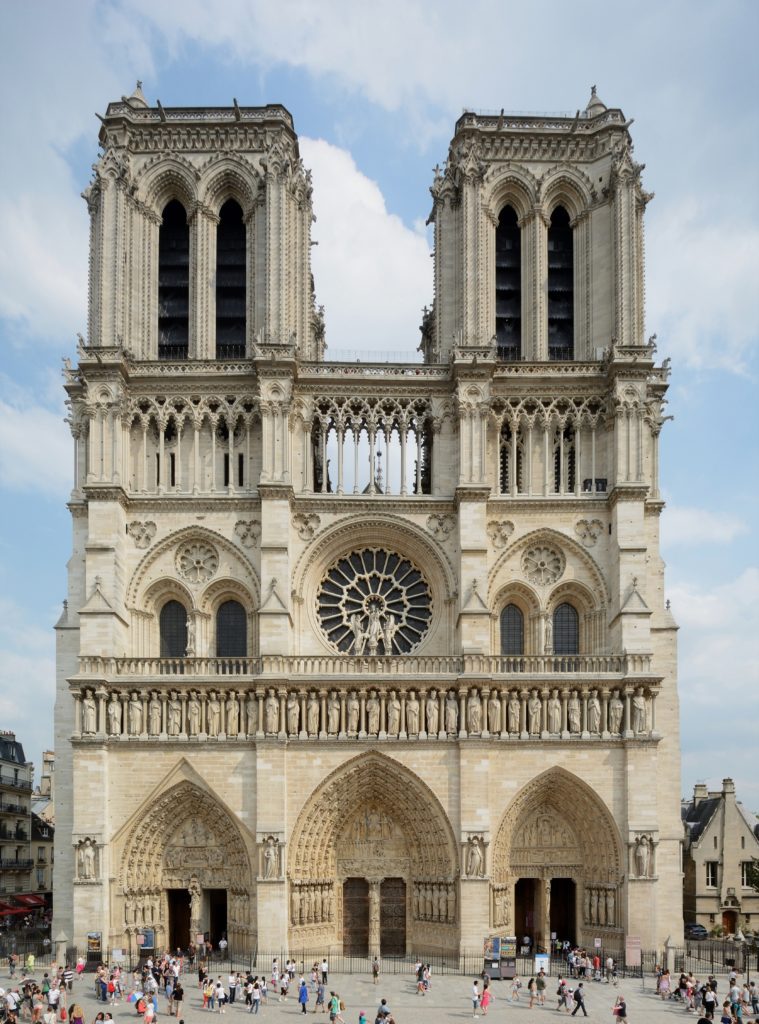A fire broke out within the confines of the famous Notre Dame Cathedral in Paris on April 15. The fire consumed most of the roof, including its architecturally intricate spire, but most of the integrity of the cathedral has been maintained. The fire is currently thought to be accidental and a result of the construction that has been ongoing to update the cathedral’s infrastructure.

collapsed, while the rest of the structure survived.
Interestingly enough, in addition to Notre Dame, a fire broke out at the Al-Aqsa Mosque in Jerusalem on the same day, considered to be one of the holiest sites in Islam, although the mosque suffered little damage. There has been considerable difference in the press coverage between these two fires.
Fires have recently affected the sites of sacred spaces on U.S. soil, too. On March 26, April 2 and April 4, three historically Black churches were burned down in Louisiana, and unlike Notre Dame, these were done purposefully. Louisiana police allege that these were the results of a hate crime. Donald Trump has not made a public statement in support of the people who have lost a sacred religious space.
The cathedral was erected in 1345, where it came to be defined by many in the Western world as one of the greatest architectural feats in history. As one of Paris’s biggest tourist attractions, with as many as 30,000 people visiting its site each day, it has become one of the most beloved historical sites in Europe.
The cathedral held — and still holds, since some of the significant work has been saved — a multitude of artworks and relics, such as the crown of thorns that is been said to be Jesus Christ’s during his crucifixion, and its roof alone is made of 5,000 oak trees. The now-destroyed spire was removed in 1786 because of stability reasons, then rebuilt during the 1860s.
However,the cathedral has fallen victim to a fire before in the 13th century, which led to more work on it between 1230 and 1240.
An interesting component is that many world leaders shared similar sentiments about the burning of the cathedral. It has appeared to make a deep impact on many people and has permeated social media since it happened.
Hillary Clinton wrote on Twitter, “My heart goes out to Paris. Notre Dame is a symbol of our ability as human beings to unite for a higher purpose — to build breathtaking spaces of worship that no one person could have built on their own.”
In an address to the nation, France’s President Emmanuel Macron stated, “Notre Dame is our history, it’s our literature, it’s our imagery. It’s the place where we live our greatest moments, from wars to pandemics to liberations…I’m telling you all tonight — we will rebuild this cathedral together. This is probably part of the French destiny.”
In a statement from the White House, Donald Trump said, “We remember with grateful hearts the tolling of Notre Dame’s bells on September 12, 2001, in solemn recognition of the tragic September 11th attacks on American soil. Those bells will sound again. We stand with France today and offer our assistance in the rehabilitation of this irreplaceable symbol of Western civilization. Vive la France!”
According to Laurent Ferri, curator of the pre-1800 Collections in the Rare Division and Manuscript Collections at Cornell University and a former curator at the French National Archives, the fire may be the worst disaster that the cathedral has experienced since the French Revolution, when anti-royalists stormed the cathedral and decapitated statues that were thought to represent French kings.
Meanwhile, donations coming in from French billionaires and corporations have reached 900 million euros, and other U.S. conglomerates such as Apple and Disneyhave monetarily supported the cause as well, eliciting criticism regarding where hefty donations are ending up as opposed to other current issues the world is facing.
People on social media have taken to sharing the donation links to the less well covered churches affected by fire in an effort to bring awareness to the other churches in more monetary need. There are GoFundMe campaigns for the Seventh District Baptist Church fires and more awareness spreading about issues that have been grossly marginalized and are in dire need of public support.
